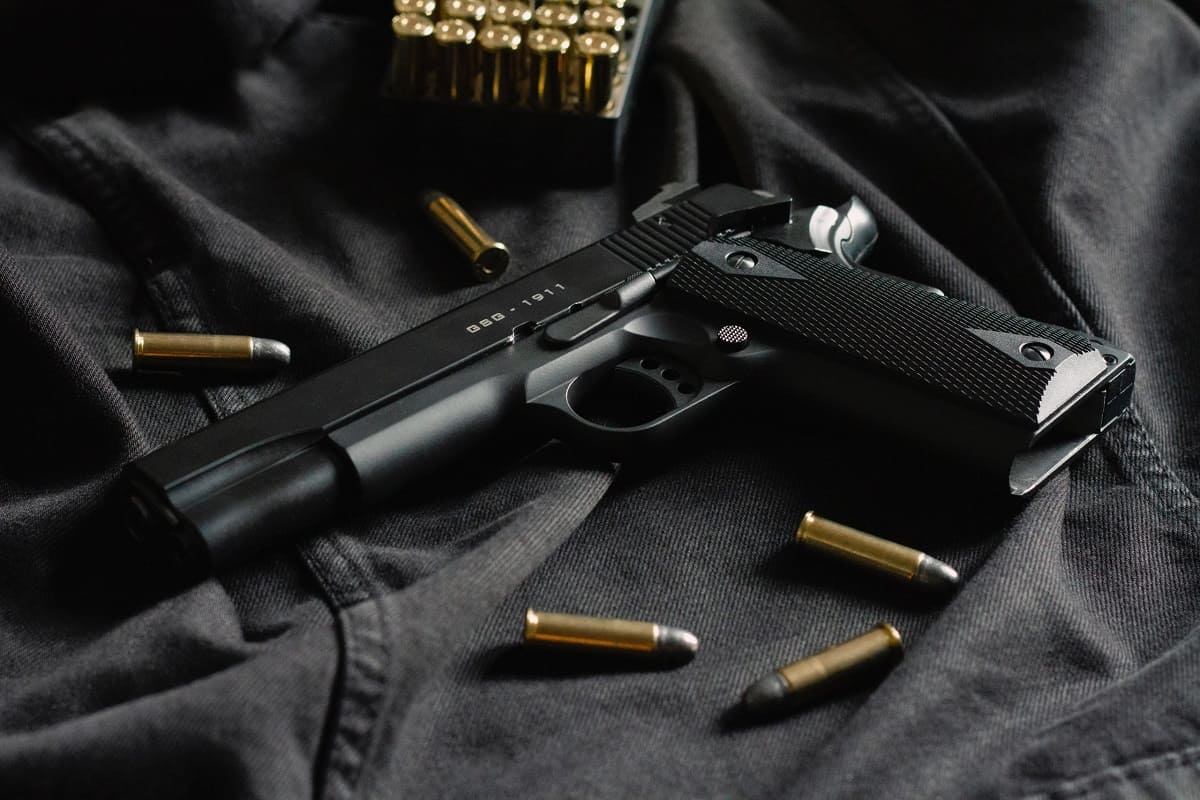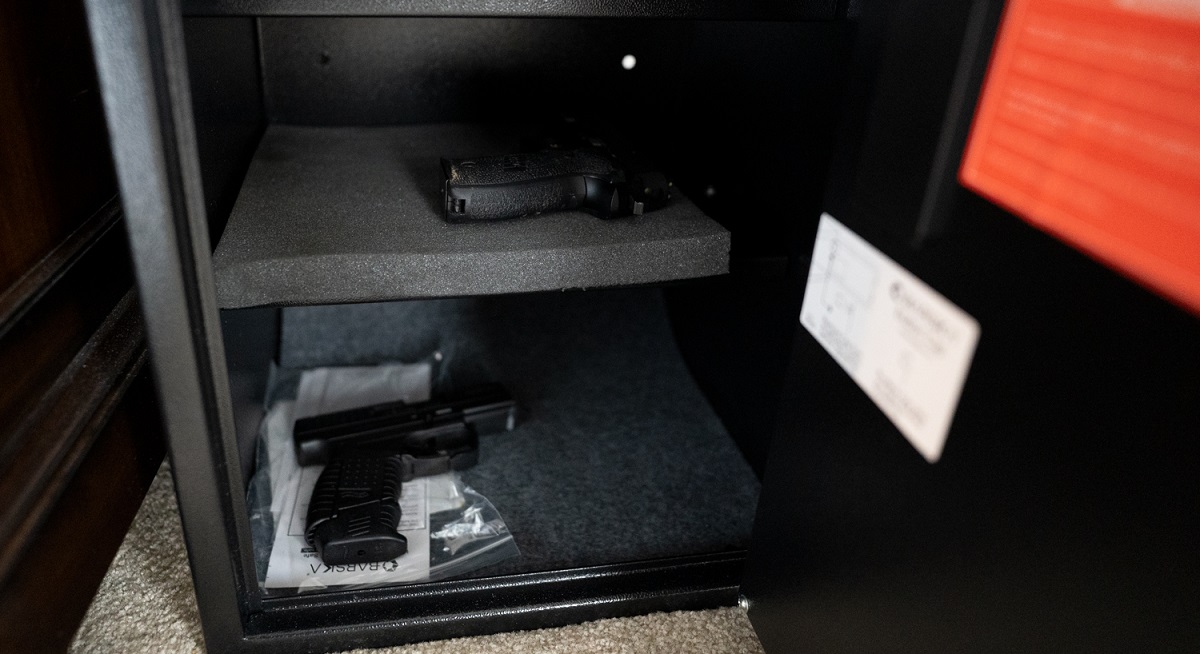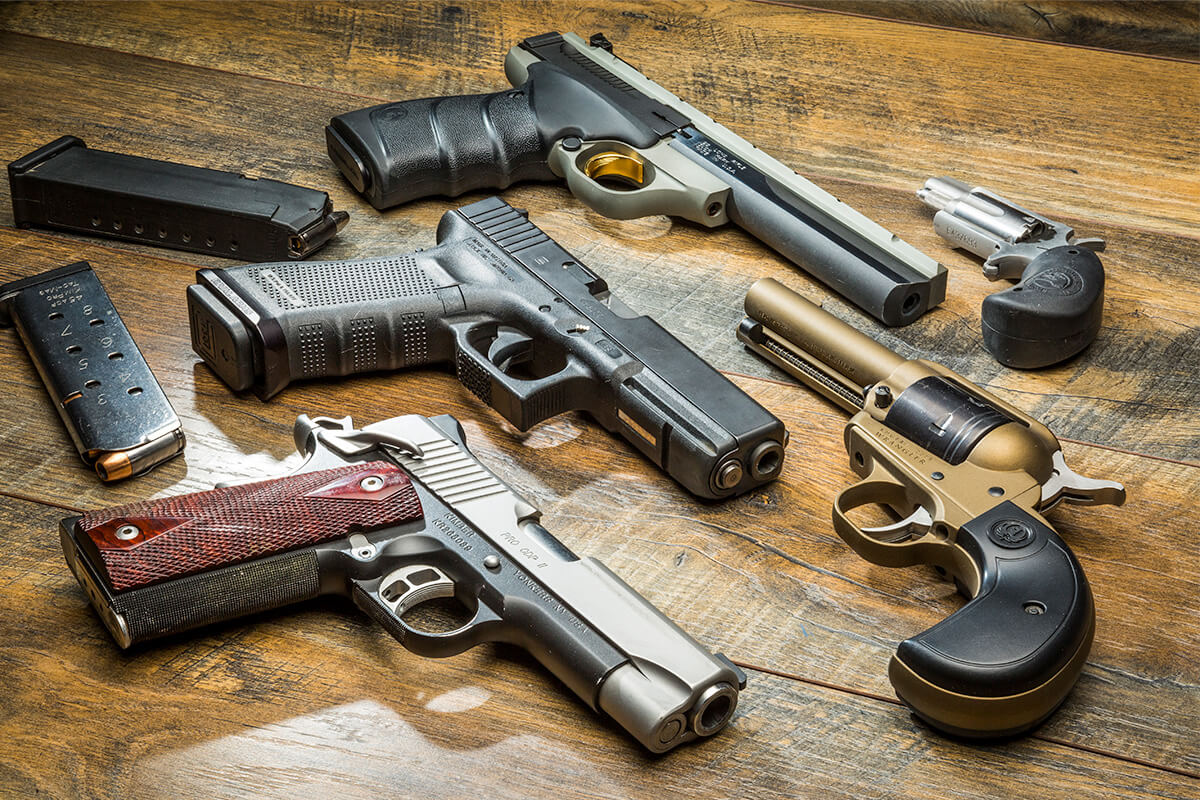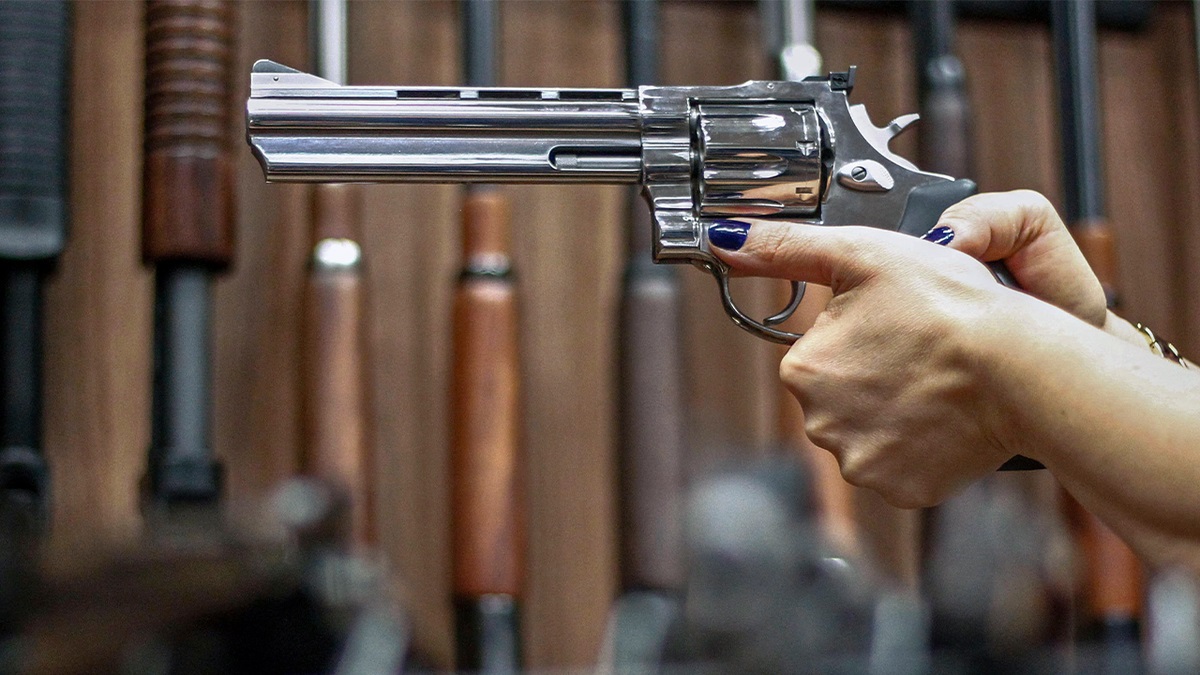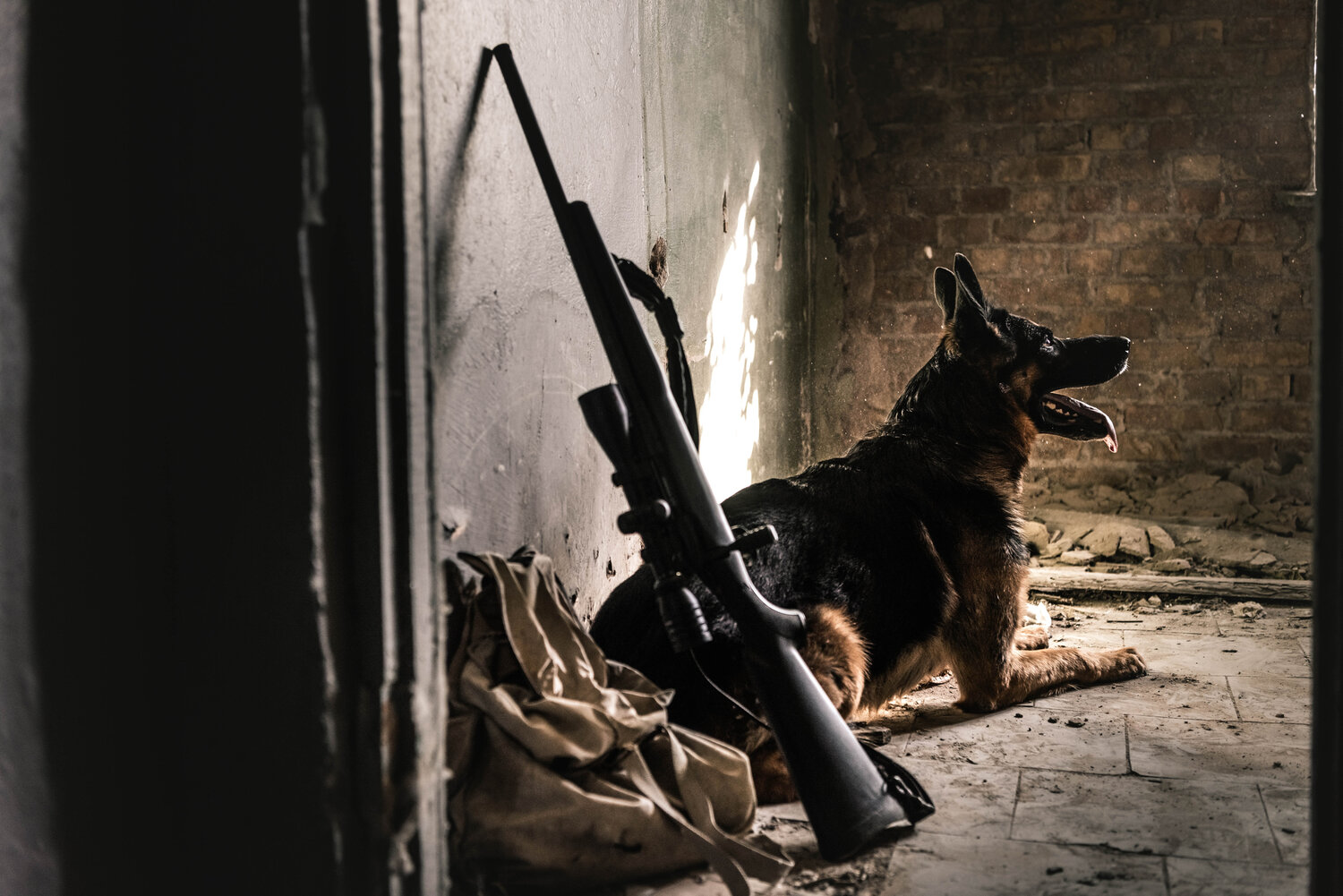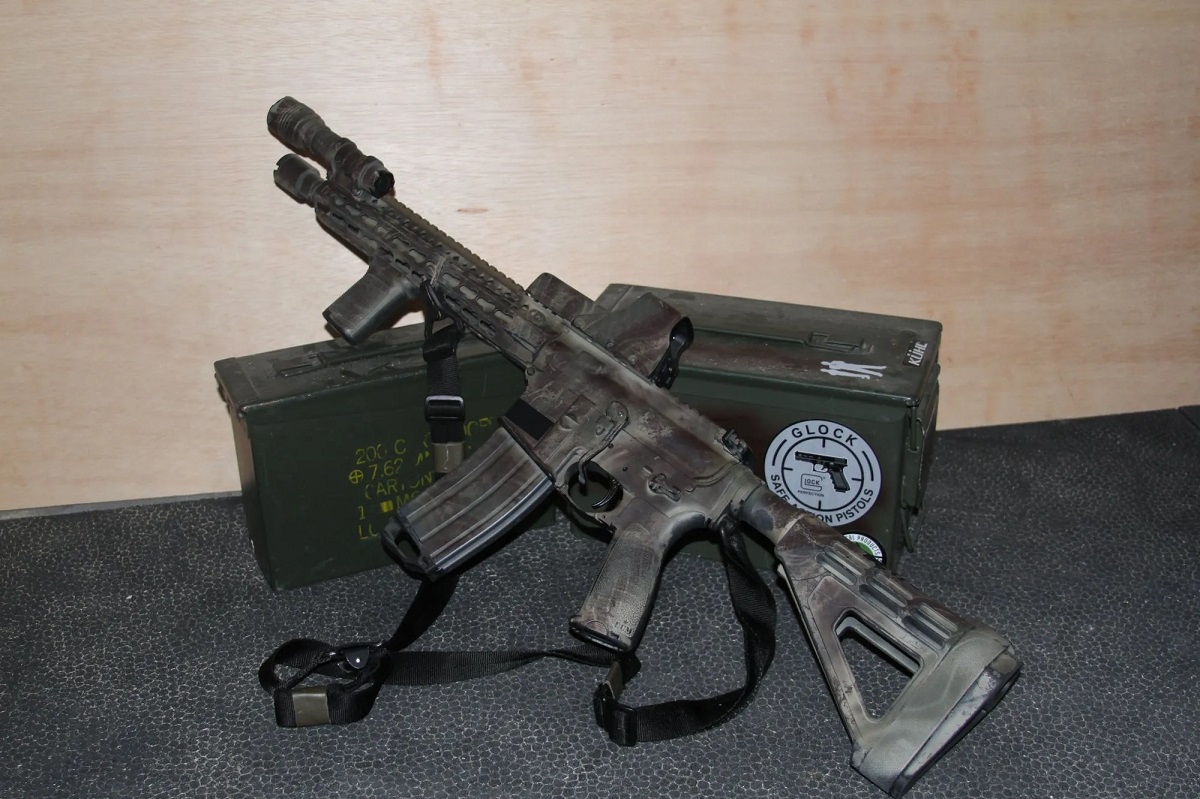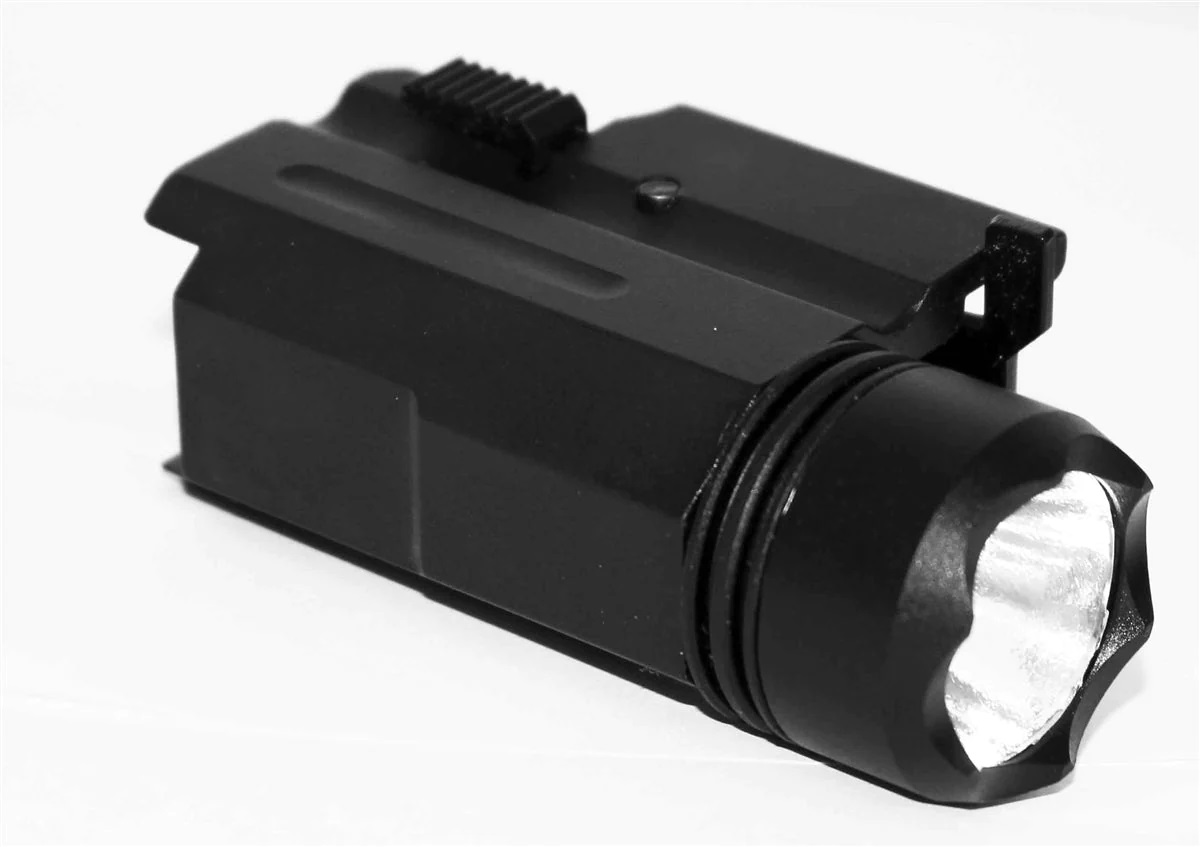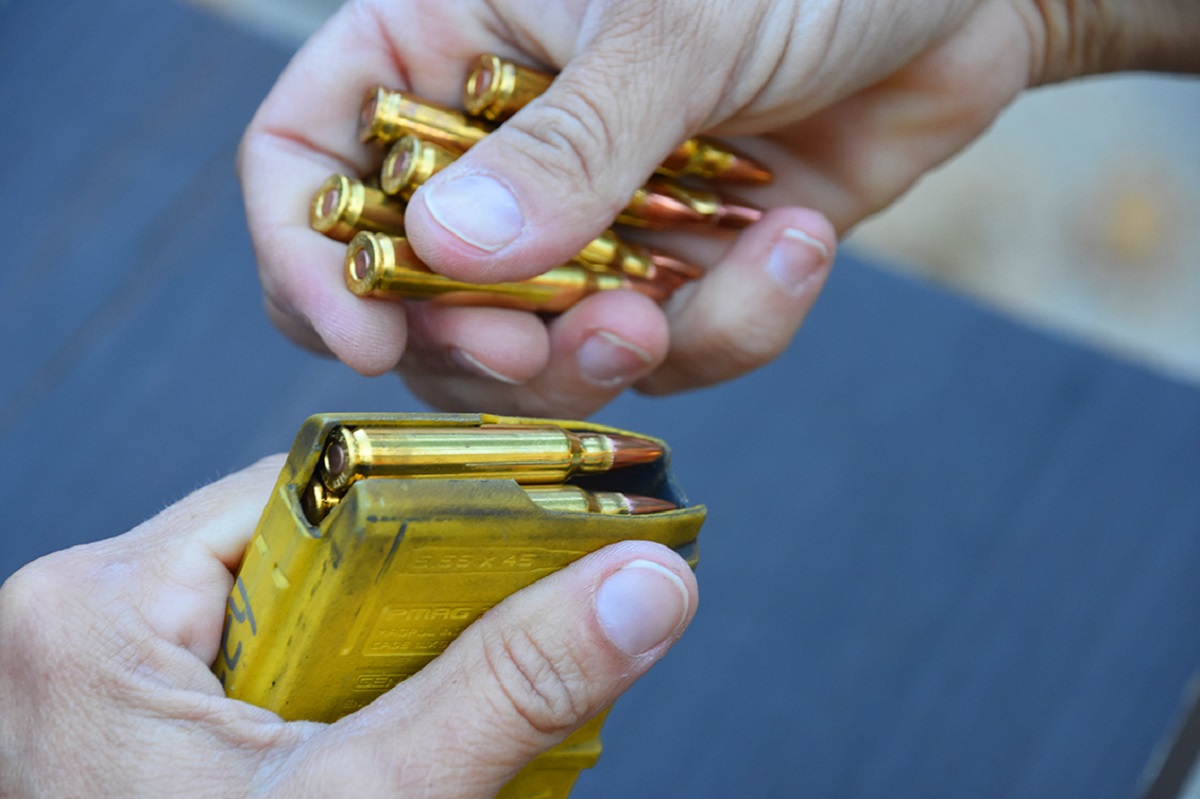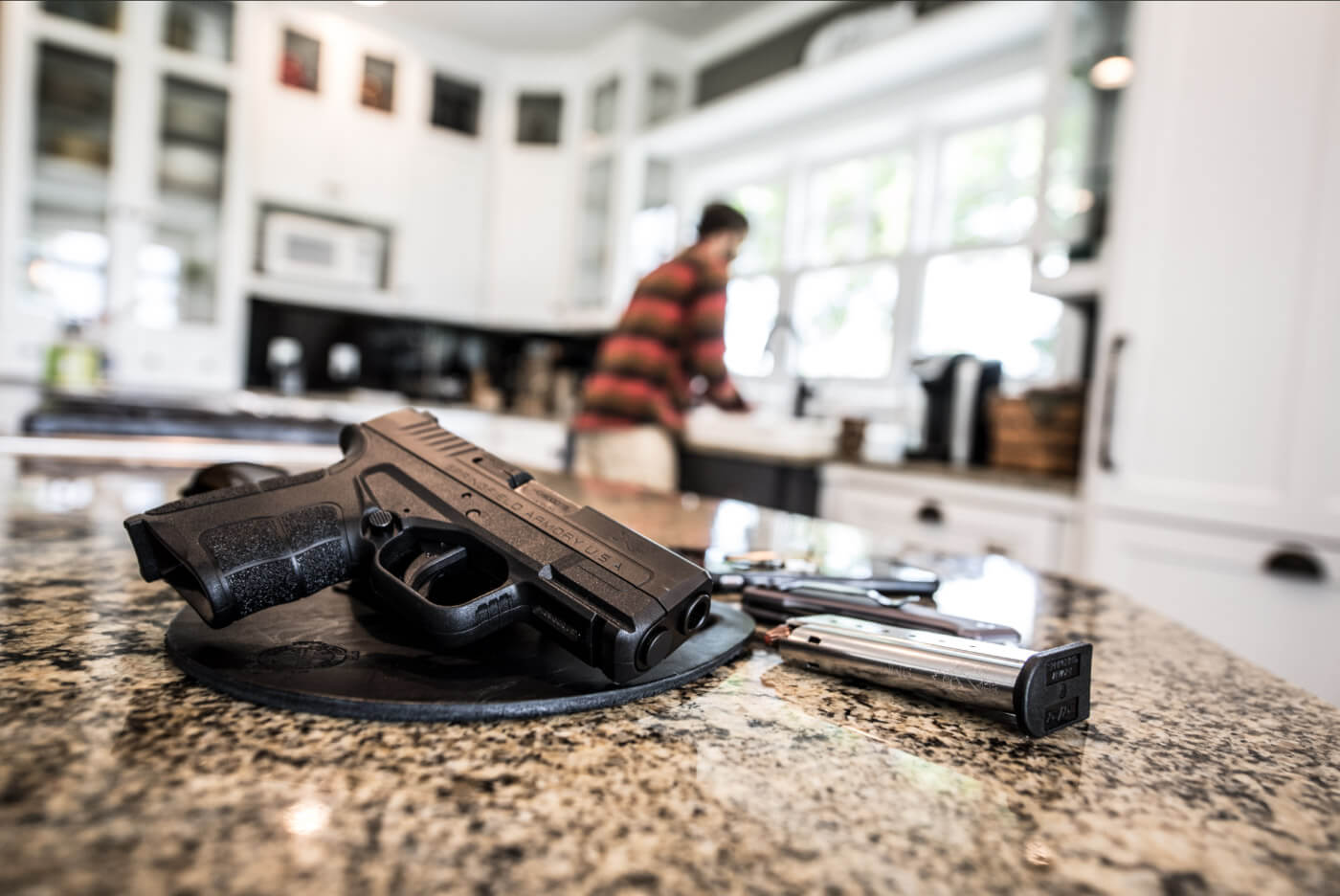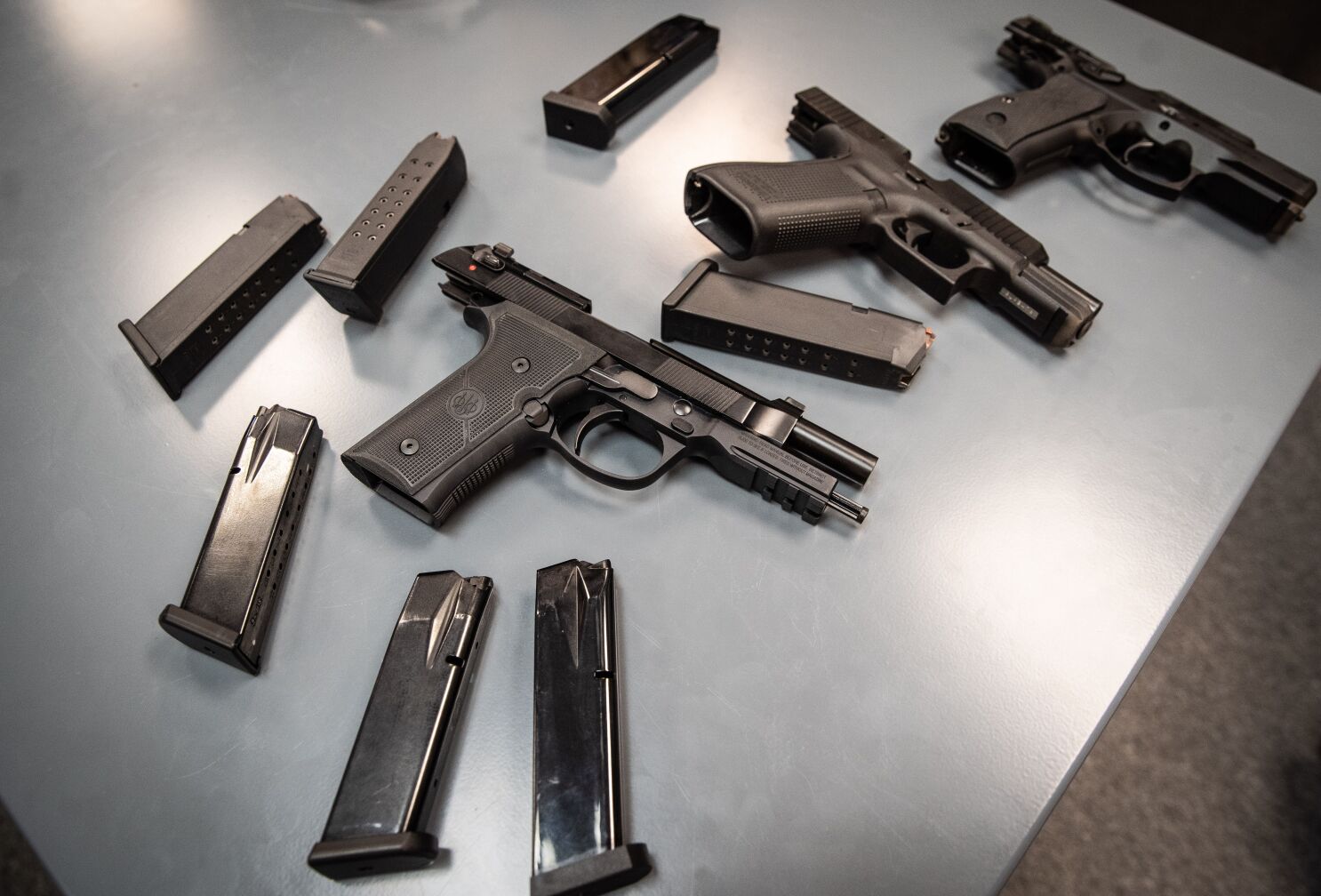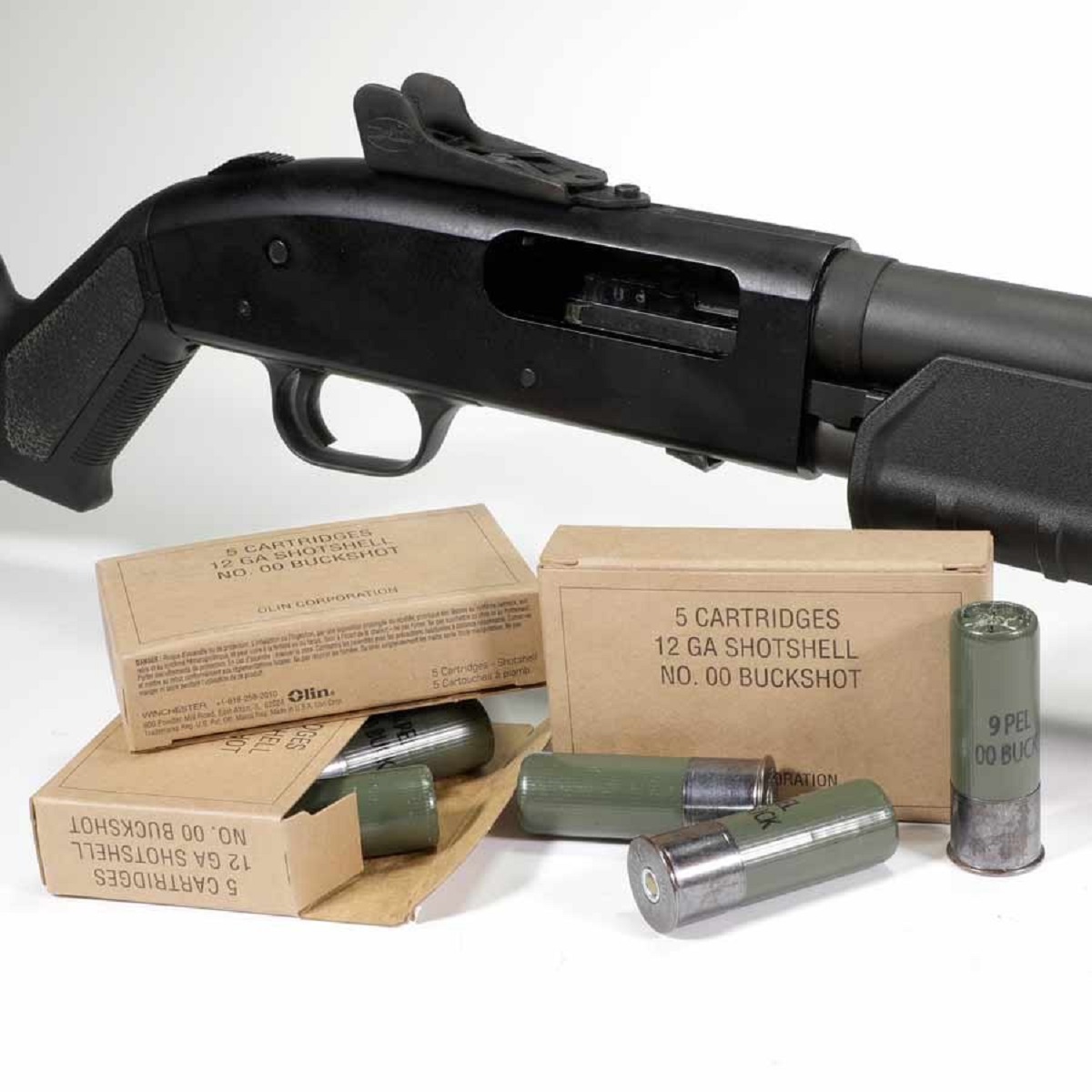Home>Home Security and Surveillance>How Many Guns Are Kept As Home Defense In America


Home Security and Surveillance
How Many Guns Are Kept As Home Defense In America
Modified: March 6, 2024
Discover the number of guns Americans keep for home defense and explore the latest trends in home security and surveillance.
(Many of the links in this article redirect to a specific reviewed product. Your purchase of these products through affiliate links helps to generate commission for Storables.com, at no extra cost. Learn more)
Introduction
Home defense gun ownership is a topic of great importance in America. With a long history rooted in the Second Amendment of the United States Constitution, the right to bear arms is a deeply ingrained aspect of American culture and society. However, the use and ownership of firearms for home defense has become a subject of intense debate and scrutiny in recent years.
Understanding the prevalence of home defense gun ownership in America is crucial for several reasons. Firstly, it provides insight into the overall firearm landscape in the country. By assessing the number of guns kept for home defense, we can gain a better understanding of the scale of firearm ownership and its implications for public safety.
Secondly, studying home defense gun ownership sheds light on individuals’ perceived need for personal protection. It allows us to examine the motivations behind the decision to keep firearms at home and gain insight into the factors that influence these choices.
This understanding is particularly relevant in the context of increasing concerns about home security and an emphasis on personal safety. In a country where incidents of burglary and home invasions occur, many individuals may view gun ownership as a means of protecting themselves and their loved ones.
Finally, exploring the prevalence of home defense gun ownership in America helps inform discussions about gun violence and its prevention. By studying the factors that influence gun ownership rates for home defense, policymakers and researchers can better address the complex issues related to firearm safety and develop more effective strategies to reduce gun-related incidents.
However, it’s important to note that the debate surrounding home defense gun ownership is multifaceted, and opinions on the matter differ widely among individuals and communities. Some believe that owning a gun provides an effective means of protection, while others argue that alternative strategies, such as improved home security systems or community policing, can be just as effective, if not more so.
With these considerations in mind, let us delve into the statistics, demographics, regional variations, and other relevant factors that contribute to a comprehensive understanding of home defense gun ownership in America.
Key Takeaways:
- America has the highest gun ownership rate globally, with about 393 million firearms. Understanding reasons for home defense gun ownership is crucial for public safety and personal well-being.
- Alternative home defense strategies, such as security systems and self-defense training, complement gun ownership. It’s important to weigh the risks and responsibilities associated with owning guns for home defense.
Read more: How To Practice Guns For Home Defense
Methodology
Accurately determining the number of guns kept for home defense in America involves thorough research and data collection. Due to the sensitive nature of this topic, it can be challenging to obtain precise and comprehensive statistics. However, several research methods and sources can provide valuable insights into home defense gun ownership.
One of the primary sources of data on gun ownership in America is national surveys and studies conducted by organizations such as the Pew Research Center, the National Survey on Private Ownership of Firearms, and the General Social Survey. These surveys gather information from a representative sample of the population and provide estimates on the prevalence of gun ownership and the reasons people own guns, including those used for home defense.
Additionally, government databases and records can provide valuable information. For example, the Bureau of Alcohol, Tobacco, Firearms, and Explosives (ATF) collects data on the number of firearms manufactured and imported into the country. Although this data does not directly reflect the number of guns kept for home defense, it gives a broader indication of the overall firearms landscape in America.
When studying home defense gun ownership, researchers may also rely on state-level surveys, which can provide insights into regional variations within the United States. Regional variations could be influenced by factors such as cultural norms, crime rates, and gun regulations specific to each state.
Furthermore, academic studies conducted by criminologists, sociologists, and experts in gun policy can offer valuable insights into the prevalence of home defense gun ownership. These studies often utilize advanced statistical techniques to analyze large datasets and provide more nuanced understandings of gun ownership patterns and trends.
It is worth noting that while surveys and studies can provide valuable data, they do have limitations. Respondents may be reluctant to disclose information about gun ownership due to privacy concerns or the potential for legal implications. The data collected may also be subject to sampling biases or errors in self-reporting.
Overall, by combining data from national surveys, government databases, state-level surveys, and academic studies, researchers can strive to create a comprehensive understanding of the number of guns kept for home defense in America. It is important to approach this research with a critical lens, considering the limitations and potential biases inherent in the data sources available.
Statistics on Gun Ownership in America
Gun ownership in America is a deeply entrenched aspect of the country’s culture and history. Understanding the overall prevalence of gun ownership is essential for gaining insights into the landscape of home defense gun ownership. Here are some key statistics:
- In the United States, it is estimated that there are approximately 393 million firearms owned by civilians.
- This means that the United States has the highest rate of civilian gun ownership in the world, with about 120 firearms per 100 residents.
- According to the Pew Research Center, about 30% of American adults say that they personally own a gun.
- In terms of gun ownership rates, the United States stands out among other developed countries. For example, countries like Canada and Australia have significantly lower rates of gun ownership per capita.
- Comparatively, countries with stricter gun control laws, such as the United Kingdom and Japan, have significantly lower rates of civilian gun ownership.
These statistics highlight the unique prevalence of gun ownership in the United States compared to other countries. The factors contributing to this disparity are complex and involve a combination of historical, cultural, and legal considerations.
It is important to note that while the number of guns owned in America is significant, the distribution is not equal among the population. Research indicates that a relatively small percentage of gun owners possess a majority of firearms. However, even with this concentrated distribution, the sheer number of guns in circulation raises important questions about the implications for home defense and public safety.
Understanding the prevalence of gun ownership in America, both overall and in the context of home defense, provides a foundation for exploring the reasons behind keeping firearms and the potential impact on society. It is crucial to consider these statistics when discussing policies and strategies related to gun control, crime prevention, and personal safety.
Reasons for Keeping Guns for Home Defense
The decision to keep guns for home defense is influenced by a variety of factors, shaped by personal beliefs, experiences, and perceptions of safety. Let’s explore some of the key reasons behind this choice:
- Protection of self and loved ones: One of the primary reasons individuals choose to keep guns for home defense is to protect themselves, their families, and their property. The belief is that having a firearm provides a means of self-defense in the event of a home invasion or threat.
- Perceived effectiveness: Many individuals view firearms as an effective tool for safeguarding their homes. The belief is that the presence of a gun can deter potential intruders or give homeowners a means to defend themselves if confronted with a threat.
- Lack of trust in law enforcement: Some people may choose to keep firearms for home defense due to a lack of trust in the ability of law enforcement to respond quickly to a home invasion or emergency situation. They may feel that having a gun gives them immediate protection and a sense of control over their own safety.
- Sense of empowerment: Owning a gun for home defense can provide a sense of empowerment for some individuals. They may feel more confident and secure knowing that they have the means to protect themselves and their loved ones in their own home.
- Historical and cultural factors: The historical significance of gun ownership in America, particularly in relation to individual freedom and self-reliance, plays a role in the decision to keep guns for home defense. Some see it as a way to exercise their constitutional right and preserve traditions passed down through generations.
- Preparation for emergencies: Others may keep guns for home defense as part of their overall emergency preparedness strategy. They see it as a proactive measure to guard against potential threats and maintain a sense of security in times of crisis.
While these reasons contribute to the decision to keep guns for home defense, it is important to note that the perceived effectiveness of guns in safeguarding one’s home is a topic of ongoing debate among researchers and experts. The effectiveness of a firearm in a home defense situation depends on various factors such as training, accessibility, and the ability to handle high-stress situations.
Alternative strategies, such as investing in robust home security systems, practicing self-defense techniques, or fostering strong relationships with neighbors and communities, also play a vital role in ensuring home safety. It is important to consider these options and strike a balance between personal beliefs, practical considerations, and the overall effectiveness of different home defense strategies.
Understanding the various reasons behind keeping guns for home defense allows for a more nuanced discussion on personal safety, gun ownership, and the overall impact on individuals and society. By exploring these reasons, policymakers and researchers can develop more targeted approaches to address the concerns of those who choose to keep guns for home defense, while also considering the broader implications for public safety.
Demographics of Home Defense Gun Owners
The decision to keep guns for home defense is influenced by various demographic factors. Let’s delve into some of the key factors that shape the decision-making process:
- Gender: Research shows that men are more likely to own guns for home defense compared to women. This gender disparity may stem from societal expectations regarding protection and the perception of firearms as a means of demonstrating strength and providing security.
- Age: Age plays a role in the decision to keep guns for home defense. Studies suggest that older adults are more likely to own firearms than younger adults. Factors such as life experiences, perceived vulnerability, and a desire to maintain independence may contribute to higher rates of gun ownership among older individuals.
- Geographic location: The geographical location also influences the likelihood of owning guns for home defense. Rural areas tend to have higher rates of gun ownership compared to urban areas. This difference can be attributed to factors such as a greater emphasis on self-reliance, longer police response times, and a connection to hunting and outdoor recreation.
- Household size: The size of a household can impact the decision to keep guns for home defense. Larger households, particularly those with children or elderly members, may place a higher priority on ensuring their safety, leading to a greater likelihood of firearm ownership.
It is important to note that these demographic factors serve as general trends and should not be used to make assumptions about individuals or their attitudes towards gun ownership. Individual beliefs, values, and personal circumstances play a significant role in shaping an individual’s decision to keep guns for home defense.
Understanding the demographic factors associated with gun ownership for home defense allows policymakers, researchers, and communities to develop targeted approaches to address specific concerns and promote responsible gun ownership. It also emphasizes the importance of education, training, and safe storage practices in ensuring the well-being of individuals, particularly in households with children or vulnerable populations.
By considering the diverse factors that influence gun ownership for home defense, we can foster a more holistic and comprehensive understanding of this complex issue, leading to more effective strategies for promoting safety and addressing the diverse needs of communities across different demographic groups.
It is estimated that there are over 393 million guns in civilian hands in the United States, with a significant portion of these being kept for home defense. It is important to ensure that any firearms kept in the home are stored safely and securely to prevent accidents or unauthorized access.
Read more: How Necessary Is A Gun For Home Defense
Regional Variations in Home Defense Gun Ownership
Gun ownership rates for home defense can vary significantly across different states and regions in America. Factors such as cultural norms, geographical characteristics, and local laws contribute to these variations. Let’s explore some key insights:
Variations in State-Level Gun Ownership: Certain states in America have higher rates of gun ownership for home defense compared to others. For example, states like Alaska, Arkansas, and Alabama tend to have higher rates of gun ownership, while states such as Hawaii, Rhode Island, and Delaware have lower rates.
Rural vs. Urban Areas: There is often a stark contrast in gun ownership rates between rural and urban areas. Rural regions typically have higher rates of gun ownership, as they may be influenced by factors such as a greater emphasis on self-reliance, longer police response times, and a tradition of hunting and outdoor activities. Urban areas, on the other hand, tend to have lower rates of gun ownership, influenced by factors such as stricter gun control laws, higher population densities, and a reliance on alternative home security measures.
Cultural and Historical Factors: Cultural and historical factors associated with specific regions can influence gun ownership rates for home defense. For instance, regions with a strong tradition of hunting or a history of self-sufficiency may have higher rates of firearm ownership. Conversely, regions with a lower cultural emphasis on gun ownership or a history of stricter gun control may have lower rates.
Crime Rates and Perceived Security: Variations in crime rates and the perceived level of security in different regions can also impact gun ownership rates. Areas with higher crime rates or a perception of increased risk may have higher rates of firearm ownership for home defense as individuals seek to protect themselves and their properties.
Understanding regional variations in gun ownership rates for home defense is essential for adopting targeted measures to promote responsible ownership, address specific concerns, and develop region-specific strategies. Policymakers and communities can take these variations into account when implementing laws, educational initiatives, and public safety campaigns related to firearm ownership and home defense.
It is important to note that regional variations in gun ownership rates are influenced by a multitude of factors. Individual beliefs, cultural diversity, and socioeconomic factors within a region also contribute to the complexity of this issue. Therefore, any analysis of regional variations should be done in a nuanced manner, taking into consideration the unique circumstances and characteristics of each region.
By exploring the regional variations in gun ownership rates for home defense, we can better understand the factors that shape individual decisions and communities’ perspectives on firearm ownership, leading to more effective approaches in ensuring public safety and addressing the diverse needs of different regions.
Discussion on Home Defense Strategies
While gun ownership for home defense is a popular choice for many, it is important to consider alternative strategies that can effectively protect individuals and their homes. Let’s evaluate some of these strategies and their potential benefits:
Security Systems: Investing in robust home security systems can provide an additional layer of protection. These systems often include features such as surveillance cameras, motion sensors, alarms, and door/window sensors. The mere presence of visible security measures can act as a deterrent to potential intruders, while the monitoring capabilities can alert homeowners and local authorities of any suspicious activity.
Self-Defense Training: Engaging in self-defense training equips individuals with the skills and techniques to protect themselves and their homes. Training programs often focus on teaching basic self-defense techniques, situational awareness, and strategies to diffuse potential threats. By empowering individuals with these skills, they can gain a sense of confidence and preparedness in home defense situations.
Community Policing: Emphasizing community policing can foster stronger connections between law enforcement agencies and communities. When neighbors and local authorities work together to create safe neighborhoods, the overall security of homes improves. Programs such as neighborhood watch initiatives, community patrols, and open communication with law enforcement officials can contribute to a safer living environment.
Secure Entry Points and Home Upgrades: Ensuring that entry points, such as doors and windows, are secure is crucial for home defense. Reinforced doors, deadbolts, and window locks can deter potential intruders. Additionally, improving outdoor lighting, maintaining well-trimmed bushes, and securing valuables in a home safe can diminish the likelihood of burglaries.
It is important to note that these alternative home defense strategies are not mutually exclusive with gun ownership. They can complement each other and provide comprehensive protection. Additionally, implementing multiple layers of security, including both physical and technological measures, can enhance the overall effectiveness of home defense.
While guns can provide a sense of security, it is essential to weigh the risks associated with their ownership, such as the potential for accidents or misuse. Factors such as training and responsible firearm storage are crucial in mitigating these risks.
Ultimately, the selection of home defense strategies should be based on individual circumstances, personal preferences, and the specific needs of each household. A well-rounded approach that incorporates a combination of strategies, including security systems, self-defense training, community policing, and secure home upgrades, can provide a balanced and effective way to ensure the safety of both individuals and their homes.
By evaluating and considering alternatives to gun ownership for home defense, individuals and communities can make informed decisions that prioritize safety, minimize risks, and promote a secure living environment for everyone.
Potential Implications of Home Defense Guns
While guns can be seen as a means of protection, it is important to consider the potential consequences and risks associated with keeping guns for home defense:
Accidental Injuries: One of the significant concerns associated with firearm ownership is the risk of accidental injuries. Accidental discharges, particularly in homes with children, can result in severe injuries or fatalities. Proper storage, such as locked cabinets or safes, is crucial in minimizing these risks. Education and training on safe handling and responsible gun ownership are also essential in preventing accidents.
Misuse and Unauthorized Access: Another potential implication of home defense guns is the risk of misuse or unauthorized access. If firearms are not securely stored or if they fall into the wrong hands, they can be used for criminal activities or unintentional harm. Implementing proper security measures, such as secure storage practices and utilizing access controls like biometric locks or keypads, can help prevent unauthorized access.
Domestic Violence: The presence of guns in a home can exacerbate the risks associated with domestic violence situations. Research has shown that access to firearms increases the likelihood of intimate partner violence escalating to fatal outcomes. Individuals in abusive relationships may face increased danger if their abuser has access to a firearm. Implementing stricter gun laws, imposing protective orders, and providing resources for victims are crucial steps in addressing this issue.
It is important to consider these potential implications when making decisions regarding home defense. Responsible gun ownership entails implementing safety measures, educating household members on firearm safety, and actively working towards preventing accidents and misuse.
Additionally, individuals should be aware of local laws and regulations governing gun ownership, ensuring compliance with legislation and regularly reviewing safety practices. Taking necessary precautions, such as attending firearms safety courses, conducting regular maintenance checks, and considering the use of gun locks or trigger locks, can contribute to a safer home environment.
It is vital for individuals considering gun ownership for home defense to critically assess the potential risks and take proactive measures to mitigate them. By understanding and addressing these potential implications, individuals can make informed decisions to promote safety for themselves, their families, and their communities.
Conclusion
Throughout this analysis, we have explored various aspects of home defense gun ownership in America, considering factors such as statistics, reasons, demographics, regional variations, alternative strategies, and potential implications. Here is a summary of the main findings:
Gun ownership in America is prevalent, with an estimated 393 million firearms owned by civilians. The United States has the highest rate of civilian gun ownership globally, with approximately 120 firearms per 100 residents. However, gun ownership rates vary across states and regions, influenced by cultural, historical, and geographical factors. Rural areas generally have higher rates of gun ownership compared to urban areas.
The decision to keep guns for home defense is influenced by various factors, including the perceived effectiveness of firearms in protecting oneself and loved ones. Other reasons include a lack of trust in law enforcement, a sense of empowerment, and a desire for personal and property protection.
In addition to gun ownership, alternative home defense strategies such as security systems, self-defense training, and community policing play significant roles in ensuring safety. These strategies can complement each other and contribute to a comprehensive approach to home defense.
Understanding the demographic factors associated with gun ownership reveals that men, older adults, and individuals in rural areas tend to have higher rates of gun ownership for home defense. However, individual beliefs, values, and personal circumstances also influence the decision to keep guns.
While keeping guns for home defense is a personal choice, it is crucial to consider the potential implications and risks associated with firearm ownership. Accidental injuries, misuse, and increased risks in cases of domestic violence are important considerations that need to be addressed through education, responsible ownership practices, and the implementation of appropriate laws and regulations.
In conclusion, home defense gun ownership in America is a complex and multifaceted issue. While firearms can provide a sense of security, it is essential to weigh the risks and responsibilities associated with their ownership. The prevalence of gun ownership and the impact it has on public safety and personal well-being call for thoughtful consideration, informed decision-making, and proactive measures to ensure responsible ownership and minimize potential risks.
By promoting education, implementing effective gun safety policies, encouraging alternative home defense strategies, and fostering constructive discussions, we can work towards a safer society while respecting the rights and choices of individuals.
Frequently Asked Questions about How Many Guns Are Kept As Home Defense In America
Was this page helpful?
At Storables.com, we guarantee accurate and reliable information. Our content, validated by Expert Board Contributors, is crafted following stringent Editorial Policies. We're committed to providing you with well-researched, expert-backed insights for all your informational needs.
